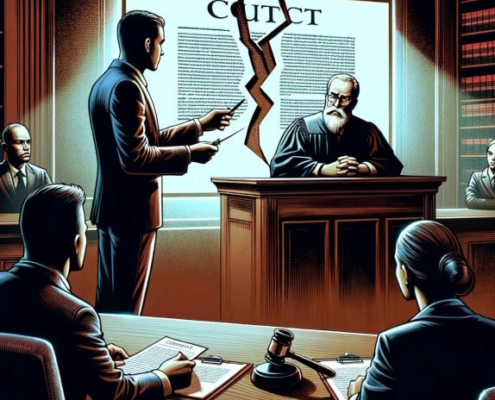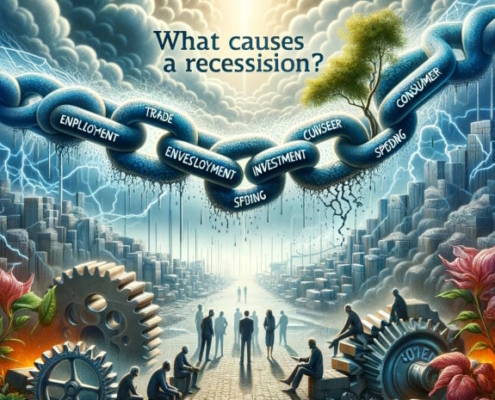California Noncompete Law
The noncompete clause prohibits a contract restricting someone’s ability to compete with a business, accept new employment opportunities in a similar line of work, or establish a competing company.
Author: Brad Nakase, Attorney
Email | Call (800) 484-4610
Definition.
One may be in breach of a non-compete covenant if he or she signed a written agreement not to compete and subsequently either (1) used a former employer’s trade secrets or customer lists to the former employer’s detriment; or (2) operated a business within the same, or within a specified, time and geographical area as a similar business that he or she sold to another. (See Dowell v. Biosense Webster, Inc. (2009) 179 Cal.App.4th 564.)
Element 1: Valid Existing Contract
In a breach of contract action, the plaintiff must plead the existence of a contract and its terms that establish the obligation at issue. The complaint must indicate on its face whether the contract is written, oral, or implied by conduct. If the action is based on an alleged breach of a written contract, the terms must be set out verbatim in the body of the complaint, or a copy of the written contract must be attached to the complaint and incorporated by reference. (Daniels v. Select Portfolio Servicing, Inc. (2016) 246 Cal.App.4th 1150; FPI Dev., Inc. v. Nakashima (1991) 231 Cal.App.3d 367, 383; Otworth v. Southern Pac. Transp. Co. (1985) 166 Cal.App.3d 452, 458-59.)
“The terms of a contract are reasonably certain if they provide a basis for determining the existence of a breach and for giving an appropriate remedy. Where a contract is so uncertain and indefinite that the intention of the parties in material particulars cannot be ascertained, the contract is void and unenforceable.” (Moncada v. West Coast Quartz Corp. (2013) 221 Cal.App.4th 768, 777.)
A contract is an agreement to do or not to do a certain thing and gives rise to an obligation or legal duty that is enforceable in an action at law. (AMCO Ins. Co. v. All Solutions Ins. Agency, LLC (2016) 224 Cal.App.4th 883; Schaefer v. Williams (1993) 15 Cal.App.4th 1243, 1246 [no contract existed because political candidate did not promise anyone that he would abide by code of Fair Campaign Practices].)
Stating the substance and legal effect of the contract in the complaint is sufficient, but attaching a copy of a written contract to the complaint is advisable. (Miles v. Deutsche Bank National Trust Co. (2015) 236 Cal.App.4th 394.)
A severable contract is one that is susceptible of division in two or more parts. The failure to prove breach of contract for one part of a severable contract does not bar plaintiff’s right to recovery for breach of another part of the severable contract. (Armstrong Petroleum Corp. v. Tri-Valley Oil & Gas Co. (2004) 116 Cal.App.4th 1375.)
Element 2: Valid Non-Compete Covenant
The non-compete covenant in the contract must be enforceable under California law. (See Cal. Bus. & Prof. Code, §§16600-16607.)
Reasonable and Clear
At common law, a restraint against competition was valid to the extent it reasonably provided for the protection of a valid interest of the buyer from the seller; such rule of reasonableness in connection with the sale of business has been codified under Business and Professions Code section 16601. (Monogram Indus., Inc. v. Sar Indus., Inc. (1976) 64 Cal.App.3d 692, 698 [Business & Professions Code section 16601 permits enforcement of a covenant prohibiting the seller from operating a business in the area where the old business is located, so long as the buyer operates the business in that area].)
Courts measure the reasonableness of covenants that tend to restrain trade by using a number of factors, including:
-
- Appropriateness of the restraint in advancing the interest to be protected;
- Availability of less harmful alternatives;
- Nature of interest interfered with which covenant interfered;
- Intent of parties or tendency of restraint to create monopoly; and
- Social or economic justification for any monopoly if it does result.
- Appropriateness of the restraint in advancing the interest to be protected;
(Quidel Corp. v. Superior Court of San Diego Cnty. (2020) 57 Cal.App.5th 155.)
The non-compete provision must be certain enough to be enforceable. (Drzewiecki v. H&R Block, Inc. (1972) 24 Cal.App.3d 695, 700, 704-05.)
The non-compete provision need not set forth a definite termination date if it clearly provides for a year to year term. (Centeno v. Roseville Community Hosp. (1979) 107 Cal.App.3d 62, 68.)
Personal Restraint
Covenants that are designed simply to prevent competition are per se unenforceable. (Metro Traffic Control, Inc. v. Shadow Traffic Network (1994) 22 Cal.App.4th 853, 860.)
A contract provision may be void as a partial restraint on one’s right to engage in business. (Morris v. Harris (1954) 127 Cal.App.2d 476, 476-77 [void provision tried to make janitor liable for liquidated damages if, within a fixed period, he solicited for himself or accepted for himself without solicitation, any clients needing janitorial services].)
Restraining an individual from seeking employment elsewhere violates public policy and constitutes an unreasonable burden on the employee. (Cerberonics, Inc. v. Unemployment Ins. Appeals Bd. (1984) 152 Cal.App.3d 172, 177.)
A covenant restricting at-will employees from providing traffic reporting services to any television or radio station for one year after termination was unenforceable. (Metro Traffic Control, Inc. v. Shadow Traffic Network (1994) 22 Cal.App.4th 853, 859-61 [restriction severely restricted employees’ mobility and betterment].)
Anti-solicitation covenants are void as unlawful business restraints except where enforcement is necessary to protect trade secrets. (Moss, Adams & Co. v. Shilling (1986) 179 Cal.App.3d 124, 130.)
An employee’s agreement not to use his employer’s confidential customer list to solicit customers for himself for one year after termination of employment did not prevent the employee from conducting the same or any other business for himself, and hence, was not void as having an unlawful object. (Gordon v. Wasserman (1957) 153 Cal.App.2d 328, 330.)
In determining that it would not rewrite an illegal covenant not to compete by construing it as merely barring misappropriation of confidential customer lists and trade secrets, the court reasoned that to do so would undermine Business and Professions Code section 16600. (Kolani v. Amitai Gluska (1998) 64 Cal.App.4th 402.)
A reasonable agreement not to use a confidential customer list is valid and enforceable. (Weissensee v. Chronicle Publ’g (1976) 59 Cal.App.3d 723, 731; see also John F. Matull & Assoc. v. Cloutier (1987) 194 Cal.App.3d 1049, 1054.)
Non-competition agreements may be appropriate to protect trade secrets. (Muggill v. Reuben H. Donnelley Corp. (1965) 62 Cal.2d 239, 242.)
The duration of a restrictive agreement is not determinative of its enforceability. Enforceability depends upon its reasonableness, evaluated in terms of employer, employee, and public. (Loral Corp. v. Moyes (1985) 174 Cal.App.3d 268, 279.)
Any party who successfully challenges an unlawful restrictive covenant is entitled to injunctive relief and is entitled to recover three times the amount of the actual damages, if any, and shall be awarded reasonable attorney’s fees together with the costs of suit. (Cal. Bus. & Prof. Code, § 17082.)
Sale of Business
In the sale of a business, a covenant not to compete will be enforced to the extent that it is reasonable and necessary to protect the buyer’s interest in terms of time, activity, and territory. (Monogram Indus., Inc. v. Sar Indus., Inc. (1976) 64 Cal.App.3d 692, 698-700.)
Covenants arising out of the sale of a business are more liberally enforced than those arising out of the employer-employee relationship. (Monogram Indus., Inc. v. Sar Indus., Inc. (1976) 64 Cal.App.3d 692, 697-98.)
Element 3: Breach
The plaintiff must show that the defendant breached the non-compete covenant. (Loral Corp. v. Robert Moyes (1985) 174 Cal.App.3d 268, 276; Monogram Indus., Inc. v. Sar Indus., Inc. (1976) 64 Cal.App.3d 692, 697, 698.)
The plaintiff must show that the contract was, in fact, breached and that the defendant’s conduct was the cause of the breach. (Loral Corp. v. Robert Moyes (1985) 174 Cal.App.3d 268, 275-76; Monogram Indus., Inc. v. SAR Indus., Inc. (1976) 64 Cal.App.3d 692, 700-01.)
A franchisor who granted a franchisee the exclusive right to use the franchisor’s trademark, trade dress, and a particular location (rather than any exclusive territory or market area) did not violate the franchise agreement by placing competing company stores in the market area. (Eichman v. Fotomat Corp. (9th Cir. 1989) 880 F.2d 149, 167-68.)
Element 4: Resulting Damage
Implicit in the element of damage is that the defendant’s breach caused the plaintiff’s damage. (Troyk v. Farmers Group, Inc. (2009) 171 Cal.App.4th 1305, 1352.)
Any breach, total or partial, which causes a measurable injury, gives the injured party a right to compensatory damages. (Brawley v. J.C. Interiors, Inc. (2008) 161 Cal.App.4th 1126.)
An essential element of breach of contract claims is that a defendant’s alleged misconduct was the cause in fact of the plaintiff’s damage. The causation analysis involves two elements. One is cause in fact. An act is a cause in fact if it is a necessary antecedent of an event. The second element is proximate cause. Proximate cause is ordinarily concerned, not with the fact of causation, but with the various considerations of policy that limit an actor’s responsibility for the consequences of his conduct. (Tribeca Companies, LLC v. First American Title Ins. Co. (2015) 239 Cal.App.4th 1088, 1102-1103.)
Remedies
Compensatory Damages
The measure of damages for breach of contract is the amount which will compensate plaintiff for all detriment proximately caused by the breach or which, in the ordinary course of things, would be likely to result from the breach. (Cal. Civ. Code, § 3300.)
Lost Profits
Future profits can be recovered to extent they can be estimated with reasonable certainty. (Sanchez-Corea v. Bank of America (1985) 38 Cal.3d 892, 907-08; Fisher v. Hampton (1975) 44 Cal.App.3d 741, 747. Lost profits are recoverable to extent they are natural and direct consequence of breach. (Brandon & Tibbs v. George Kevorkian Accountancy Corp. (1990) 226 Cal.App.3d 442, 457, 277; Postal Instant Press v. Sealy (1996) 43 Cal.App.4th 1704, 1709 [franchisee’s failure to make timely royalty payments to franchisor was not a “natural and direct” consequence of the breach because franchisor chose to terminate contract, thus losing entitlement of future royalty payments].)
Equitable Relief
Specific Performance
Specific performance is granted only when money damages are inadequate. (Palo Alto- Menlo Park Yellow Cab Co. v. Santa Clara County Transit Dist. (1976) 65 Cal.App.3d 121, 132-33.)
Injunction (Very Limited Availability)
Injunctive relief is largely within discretion of trial court, considering inadequacy of damages to plaintiff, as well as harm to defendant. (Smith v. Mendonsa (1952) 108 Cal.App.2d 540, 543-44.)
Statute of Limitations
Generally, the limitations period is four years for written contracts (Cal. Civ. Proc. Code, §337, subd. (a).) A contract cause of action does not accrue until the contract has been breached. (Spear v. Cal. State Automobile Assn. (1992) 2 Cal.4th 1035, 1042.) The discovery rule may be applied to breaches of contract which can be, and are, committed in secret and, moreover, where the harm flowing from those breaches will not be reasonably discoverable by plaintiffs until a future time. (Gryczman v. 4550 Pico Partners, Ltd. (2003) 107 Cal.App.4th 1, 4-5.)
Affirmative Defenses
Unlawful Restriction of Trade or Business
California Business and Profession Code section 16600 states “except as provided in this chapter, every contract by which anyone is restrained from engaging in a lawful profession, trade, or business of any kinds is to that extend void.” (Cal. Bus. & Prof. Code, §16600.) There are only three statutory exceptions to this prohibition on noncompete agreements: One who sells the goodwill of a business, or all of one’s ownership interest in a business entity (which includes partnerships or corporations), or substantially all of its operating assets and goodwill, to a buyer who will carry on the business may agree with the buyer not to carry on a similar business within a specified geographic area, if the business will be carried on by the buyer (§ 16601); upon dissolution of a partnership or dissociation of a partner, such partner may agree not to carry on a similar business within a specified geographic area, if the business will be carried on by remaining partners or anyone deriving title to the business or its goodwill (§ 16602); and a member of a limited liability company may agree not to carry on a similar business within a specified geographic area, so long as other members or anyone deriving title to the business or its goodwill carries on a like business (§ 16602.5) (Dowell v. Biosense Webster, Inc. (2009) 179 Cal.App.4th 564, 547.)
Have a quick question? We answered nearly 2000 FAQs.
See all blogs: Business | Corporate | Employment
Most recent blogs:






























